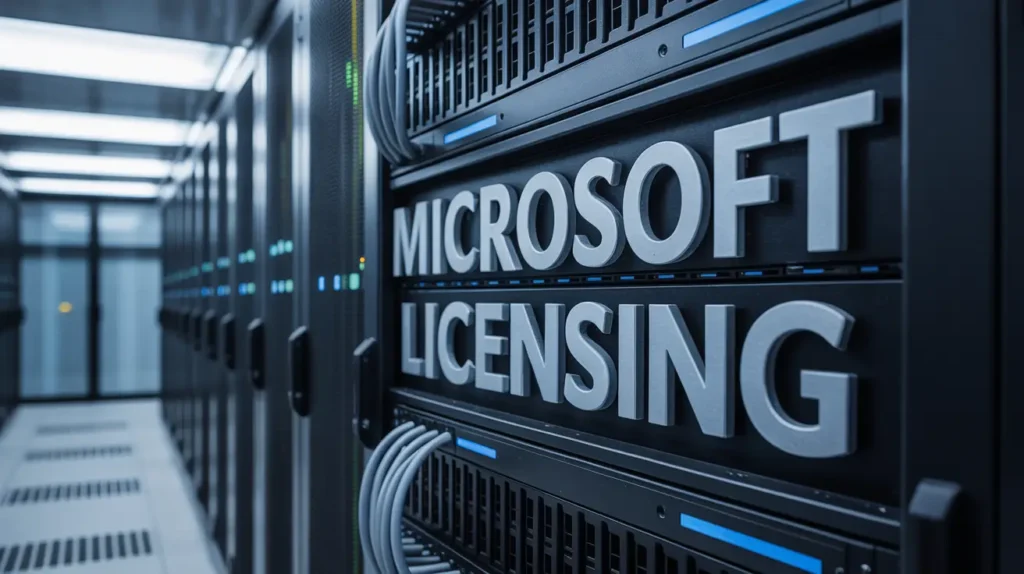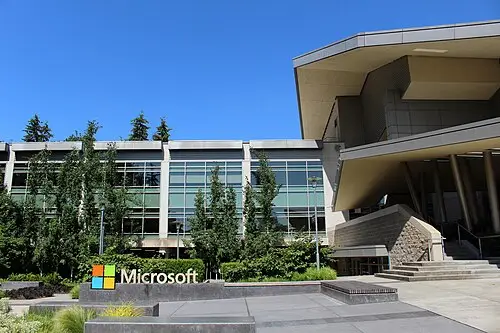Summary - Microsoft’s Nov 1 Licensing Change
Q: What’s happening on Nov 1, 2025?
- 👉 Microsoft is eliminating EA volume discounts (Levels B–D) for Online Services. All customers will pay Level A list price.
Q: Who’s affected?
- Enterprise Agreement (EA) customers
- MPSA & OSPA customers
- Applies to M365, Dynamics, Windows 365, Power Platform, Security & Compliance
- ❌ Not affected (for now): On-prem software, Education, U.S. Government
Q: How big is the impact?
- Level B (2,400–5,999 users) → ~6% increase (~+$98K/year for 3,000 users)
- Level C (6,000–14,999 users) → ~9% increase (~+$369K/year for 10,000 users)
- Level D (15,000+ users) → ~12% increase (~+$2M/year for 25,000 users)
Q: When will it hit?
- At renewal on/after Nov 1, 2025
- Immediately for new Online Services added after that date
Q: What should organizations do now?
- Start renewal talks early (12–18 months ahead)
- Audit license usage to eliminate waste & right-size tiers
- Model alternative scenarios (CSP, MCA-E, hybrid, competitors)
- Negotiate aggressively — focus on discretionary discounts, price caps, credits, and terms
Q: Why act now?If you wait until renewal, you’ll pay list price — potentially millions more over your contract.
👉 Celebration OnPoint helps organizations scan usage, build cost models, and negotiate smarter to protect budgets and fund innovation instead of getting surprised by fees you don't plan or budget for.
Microsoft’s November 1, 2025 licensing change represents the most significant Enterprise Agreement pricing transformation in over two decades. This shift will fundamentally alter how organizations purchase Microsoft’s Online Services, eliminating traditional volume discounts that have been the cornerstone of EA negotiations for years.
Read Microsoft’s Announcements: Microsoft’s Licensing Change
Microsoft Online Services pricing update
Change to Microsoft volume licensing discounts coming November 2025
What’s Changing and Why It Matters
The End of Waterfall Discounts
Microsoft is eliminating the automatic price level discounts (Levels B–D) that have provided volume-based savings for decades. Under the traditional system, organizations enjoyed escalating discounts based on user counts:
- Level A: 500-2,499 users (baseline pricing)
- Level B: 2,400-5,999 users (~6% discount)
- Level C: 6,000-14,999 users (~9% discount)
- Level D: 15,000+ users (~12% discount)
This shift marks a significant change for volume licensing programs, as organizations will no longer benefit from traditional volume-based discounts. Instead, Microsoft is moving towards revenue based negotiations, where pricing and discounts are increasingly tied to overall spend, commitment, and strategic value rather than just license quantity.
Starting November 1, 2025, all customers will pay Level A pricing (equivalent to Microsoft.com list prices) regardless of their organization size. This new pricing structure is part of Microsoft’s new licensing approach, reflecting broader changes in how enterprise agreements are managed. This change has been in the works since Microsoft announced their Modern Commerce initiative in 2017.
Scope of Impact
This change affects:
- Enterprise Agreement (EA) customers (including Enterprise Enrollment, Enterprise Subscription Enrollment, and Server and Cloud Enrollment)
- Microsoft Products and Services Agreement (MPSA) customers
- Online Services Premium Agreement (OSPA) customers in China
The change also impacts cloud licenses, with adjustments to discounts and pricing structures for cloud services as organizations transition from on-premises licensing to cloud-based solutions.
The change applies to Online Services only, including:
- Microsoft 365
- Dynamics 365
- Windows 365
- Security, Compliance, and Identity services
- Power Platform
What’s NOT affected (for now):
- On-premises software pricing
- U.S. Government price lists (Federal, State, Local)
- Education customers worldwide
Financial Impact by Organization Size
The cost increases will vary significantly based on your current pricing tier:
Current Level | User Count | Est. Price Increase | Annual Impact Example |
|---|---|---|---|
Level B | 2,400-5,999 users | ~6% | +$98,000/year for 3,000 users |
Level C | 6,000-14,999 users | ~9% | +$369,000/year for 10,000 users |
Level D | 15,000+ users | ~12% | +$2 million/year for 25,000 users |
For large enterprises currently enjoying Level D pricing, this change could add millions in additional spend over the next contract cycle.
Given these increases, organizations should take proactive steps to control costs, such as considering upfront annual payments instead of monthly billing. It is also crucial to make informed decisions when evaluating Microsoft licensing and pricing changes to avoid unexpected financial impact.
How Renewals and New Purchases Will Be Affected
Timing of Implementation
The pricing change takes effect in two scenarios:
- At renewal: For agreements renewing on or after November 1, 2025
- New purchases: When adding Online Services not already listed on your Customer Price Sheet after November 1, 2025
If your EA extends beyond November 2025, you’ll retain current pricing until renewal. However, any new Online Services added after November 1 will be priced at Level A immediately.
Impact on Renewals
Organizations approaching renewal face the most significant impact. A company with 25,000 Microsoft 365 E3 subscriptions that previously enjoyed both Level D pricing (12% automatic discount) and negotiated additional discounts could face a massive uplift if both discount layers are removed.
Additionally, organizations may have the option to transition to the Microsoft Customer Agreement, which offers a streamlined, digital-first purchasing model. This transition can affect renewal strategies, as it may change how discounts and pricing are structured compared to traditional Enterprise Agreements.
Microsoft Unified Support customers will see additional cost increases, as support fees are calculated as a percentage of product spend.
Steps to Take Now to Avoid Paying List Price
1. Start Negotiations Early (12-18 Months Before Renewal)
Don’t wait until your EA expires. Begin renewal discussions 12-18 months in advance to allow ample time for assessment and negotiation. This early start provides crucial advantages:
- Time to assess current usage and identify optimization opportunities
- Ability to leverage Microsoft’s fiscal deadlines (quarter-end and year-end in June)
- Opportunity to explore alternatives and develop your BATNA (Best Alternative to a Negotiated Agreement)
Strategic planning at this stage is essential to maximize value from your technology investments and minimize unnecessary costs.
2. Conduct a Comprehensive Licensing Assessment
Before negotiations begin:
- Audit current usage to identify unused licenses and eliminate waste. We have a very compelling capability we offer our customers that not only helps you assess your user based usage (what products are the using and how, informing your Microsoft app decisions on a more granular level than what most of the herd is doing now).
- Right-size your licensing by moving users to appropriate tiers (e.g., from E5 to E3 where E5 features aren’t needed)
- Analyze growth projections to avoid over-committing or under-provisioning
Tailored solutions are critical here, as customized consulting and IT services can optimize your licensing, ensure regulatory compliance, and address your organization’s specific needs.
One case study showed a company reducing annual costs from $15 million to $12 million (a 20% reduction) through comprehensive usage analysis and strategic negotiations.
3. Build Alternative Scenarios
Develop credible alternatives to strengthen your negotiating position:
- Research competitive solutions (Google Workspace, AWS alternatives)
- Consider Cloud Solution Provider (CSP) arrangements for more flexibility
- Evaluate hybrid on-premises/cloud scenarios where appropriate. There are plenty of compelling hybrid scenarios that may work well for your business and help you avoid lock-in.
4. Time Your Renewal Strategically
Microsoft’s fiscal calendar creates negotiation opportunities:
- Urgent action before October 31st, 2025: If you are currently in an Enterprise Agreement with pricing levels B-D, review your product roadmap today. You can add changes to your CPS (Customer Price Sheet) to retain current discount levels.
- Q4 (ending June 30): Microsoft’s fiscal year-end creates maximum urgency. However, the best pricing doesn’t come at closing time.
- Quarter-ends: March 31, June 30, September 30, December 31. SQL has a natural purchase urgency that happens in one specific month.
- Early negotiations: Start 12+ months early but don’t be afraid to delay signing if terms aren’t favorable
Negotiation Approaches to Secure Discounts
1. Challenge Microsoft’s First Offer
Microsoft’s initial EA quote is merely an opening bid. Never accept the first offer – assume there’s a better deal available because there almost invariably is. Counter aggressively, citing market benchmarks and competitor alternatives.
2. Negotiate Beyond Standard Pricing
Since automatic volume discounts are disappearing, focus on discretionary discounting:
- Push for additional percentage discounts off Level A pricing
- Bundle services strategically to unlock volume commitments
- Request deployment credits, training vouchers, or pilot programs at no additional cost
3. Secure Price Protections
Negotiate strict controls on future price increases:
- Flat 3-year pricing: Lock Year 2 and Year 3 prices equal to Year 1
- Price increase caps: Limit annual increases to 0-2% maximum
- True-up protection: Ensure additional licenses added mid-term use the same discounted unit price
- Renewal price caps: Limit how much prices can increase at the next renewal
4. Leverage Microsoft’s Business Objectives
Microsoft is heavily focused on:
- Cloud adoption: Use Azure commitments as negotiation leverage
- AI services: Consider strategic Copilot pilots rather than company-wide deployments
- Multi-year commitments: Exchange longer terms for price protections
When building alternative scenarios, consider working with CSP partners who can provide competitive pricing and value added services, which can strengthen your negotiation position and offer additional benefits compared to standard agreements.
5. Use Competitive Pressure
Reference competitor solutions and pricing to justify better terms:
- Google Workspace for productivity suites
- AWS for cloud infrastructure
- Specialized security vendors for compliance tools
Real-World Examples of Savings Achieved
Case Study 1: U.S. Retail Chain
An 8,000-employee retail chain approaching EA renewal achieved:
- 15% overall savings on Microsoft 365 licenses
- $200,000 in Azure credits to discourage AWS migration
- Price lock: 0% increases for 3 years
- Flexibility clause: 5% true-down option at 18-month mark
- Leveraged Software Assurance to enable upgrade rights and transition to newer Office products, further contributing to cost savings.
- Considered the impact of recent Microsoft pricing changes on Power BI, Teams Phone, and Teams Phone Standard as part of their overall budgeting and licensing strategy.
Case Study 2: ACME Corporation
A mid-sized enterprise achieved:
- Overall 15% discount on M365 licenses by threatening Google Workspace adoption
- 50% discount on 300 Copilot pilot licenses for six months
- 25% reduction in support fees by unbundling Unified Support
- Total savings: $9 million over 3 years (from $15M to $12M annually)
- Utilized Software Assurance benefits and upgraded to the latest Office suite, maximizing licensing flexibility and discounts.
- Factored in the effects of Microsoft’s pricing updates on Power BI, Teams Phone, and Teams Phone Standard when negotiating their agreement.
Key Success Factors
Both examples demonstrated:
- Early negotiation (starting 12+ months before renewal)
- Credible alternatives (Google, AWS) as negotiation leverage
- Strategic unbundling of unnecessary services
- Timing leverage using Microsoft’s fiscal deadlines
Strategic Recommendations for 2025-2026
For Large Enterprises (Level C/D Customers)
- Immediate action required: The 9-12% automatic discount loss represents millions in increased costs
- Consider CSP alternatives: May provide more flexibility than traditional EA
- Negotiate aggressively: Your size should still command significant discretionary discounts
- Explore MCA-E transition: Microsoft’s new evergreen contract model may offer benefits if negotiated properly
For Mid-Market Organizations (Level B Customers)
- Focus on efficiency: The 6% increase can be offset through license optimization
- Bundle strategically: Use multi-product commitments to unlock discounts
- Leverage growth: Trade future expansion commitments for current pricing protections
For All Organizations
- Don’t panic, but don’t wait: Start planning immediately but negotiate from a position of strength
- Question every line item: Challenge Microsoft’s product recommendations and quantities
- Secure multi-year price locks: Protect against future increases beyond the current term
- Consider professional help: Engage with experts who know why Microsoft is making this change, understand the licensing landscape and have been on the other end of countless complex Microsoft negotiations. NOW is the time you need an expert on your side.
How Celebration OnPoint Can Help You
Microsoft’s November 2025 licensing change is the biggest shift in two decades. The loss of automatic volume discounts means most enterprises will see millions in added costs if they simply “renew as usual.”
But here’s the good news: with the right strategy, you can still negotiate favorable terms, optimize licenses, and prevent waste. The key is preparation—well before renewal deadlines.
Our Offer: Your Licensing Advantage
We help you take back control of your Microsoft spend with a proven approach:
- Full Org Scan → Pinpoint underused, duplicated, or misaligned licenses.
- Portfolio & Usage Review → A tailored licensing strategy based on your actual environment—not Microsoft’s defaults.
- Strategic License Structuring → Clear, actionable options for buying smarter (EA, CSP, MCA-E, or hybrid paths).
- Cost Optimization Assessment → Model the impact of Microsoft’s new rules and uncover hidden savings.
- Expert Negotiation & Renewal Support → Insider strategies to secure stronger pricing, terms, and protections.
- Forecasting & Spend Management → Predictable cost models to protect your budget and plan for growth.
👉 Bottom line: We give you the data, strategy, and negotiation muscle to avoid list price—and save you millions.
Exclusive Webinar: Prep for Microsoft’s 2025 Licensing Changes
This isn’t just a pricing update. It’s a multi-million-dollar decision point for every Microsoft customer. If you wait until renewal to act, you’ll already be behind.
Join our live, interactive webinar where we’ll break down exactly how to stay ahead:
✅ What you’ll learn:
- How to calculate the true financial impact of losing Level B–D discounts
- Five negotiation levers Microsoft doesn’t want you to know about
- Why aligning your renewal with Microsoft’s fiscal deadlines can unlock savings
- Real-world case studies of enterprises that avoided massive cost hikes
- How to build your BATNA (Best Alternative to a Negotiated Agreement) and negotiate from strength
✅ Who should attend:
- CIOs, CFOs, and Procurement Leaders managing Microsoft Enterprise Agreements
- IT Decision-Makers facing renewals between 2025–2026
- Finance & Vendor Management teams focused on cutting waste and controlling spend
✅ Your Host and Presenter
Joseph Paranteau is the kind of insider you want on your team—he’s a former Microsoft sales leader who sold in every Microsoft US sales org, closing more than $1.4B in contracts. He’s helped global licensing create new programs. And, he’s sat on the other side of the table and knows exactly how Microsoft negotiates, where they flex and why, and how to push back with leverage. Before he was at Microsoft, he worked in the partner channel, winning awards.
Joseph is also the award-winning author of Billion Dollar Sales Secrets and a recognized authority on sales psychology, B2B growth strategy, and enterprise negotiations. In this session, he’ll share real-life examples of what has worked, what doesn’t, and rarely known insights to give you an advantage—strategies you can use immediately.
📅 Reserve Your Spot
Seats are limited—we’re keeping it highly interactive so you can bring your questions and get live answers.
👉 Register Now for the Webinar
🚀Why This Matters Now
If you do nothing, you will pay list price. That’s money you could be putting into innovation, security, or AI initiatives instead of inflated licensing fees.
Don’t get blindsided. Get informed. Get strategic. Negotiate from strength.




